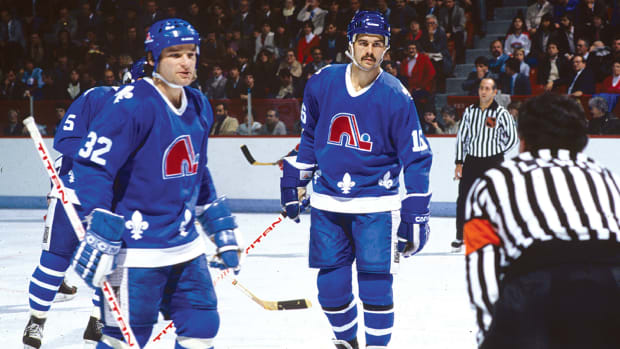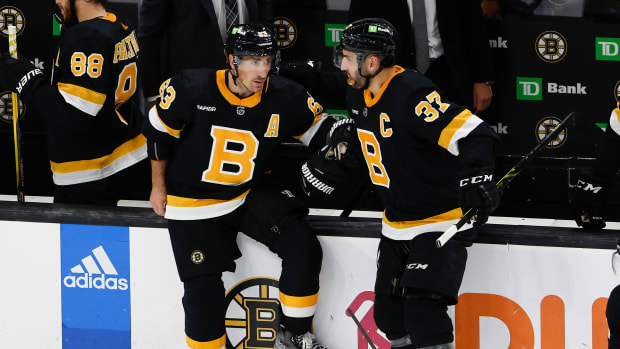Like every sport, hockey has its challenges – structural, philosophical and otherwise. But one problem-identifier who has been a constant, for more than a decade, is renowned Dr. Charles Tator, who has advocated since 1992 for safer play areas in sports.
Now 86 years old, the Toronto-based neurosurgeon hasn’t sat by silently as traumatic brain injuries have come into focus by the media and hockey sports leagues. Rather, he has laid out clear and convincing arguments for meaningful measures to be taken in order to protect the quality of life of athletes and amateur participants.
Hockey has been one of Tator’s main focuses – all the way to this past September, when he published a study in the Canadian Journal of Neurological Science and suggested hockey associations raise the age level allowing bodychecking from its current 13- to 14-year-old level to 18 years old.
“There is a common misconception that introducing bodychecking at an early age can help prevent injuries such as concussion by ensuring that children are skilled in how to withstand a bodycheck, when in fact there is no data to support this,” Tator’s recent study said. “We show the potential to prevent 85 percent of bodycheck-caused concussions by raising the permissible bodychecking age from its current age of 13 to 14 to 18 years of age. There is also the potential to eliminate years of suffering from bodycheck-induced (post-concussion symptoms, also known as PCS).”
Two weeks ago, Tator spoke to the McGill Tribune about the impact of brain injuries on youth, and he was just as straightforward as his new study was.
“Because treatment for neurological injuries is not effective for everybody, we should spend more time trying to prevent the injuries from happening in the first place,” Tator told the Tribune. “Our data indicated that by 18, you’re much more agile…you can skate better…and your brain is more developed…(w)e didn’t have too many 18-year-olds with concussions from bodychecking.”
Tator’s new study followed 87 hockey players – 21 women and 66 men – between the ages 10 and 18 who were referred to the Canadian Concussion Center at Toronto Western Hospital from 1997 to 2017 after they were diagnosed with a concussion. The study showed that PCS – diagnosed when concussion symptoms last beyond the expected recovery period of seven-to-10 days after the initial injury – was found in 80.4 percent of players. Of 34 patients concussed by a bodycheck, 70.6 percent were diagnosed with PCS.
Tator’s study preceded this week’s announcement from the U.S. National Institutes of Health (NIH) formally acknowledging a causal link between repeated blows to the head and the neurodegenerative brain disease known as Chronic Traumatic Encephalopathy (CTE).
The NIH is the world’s top biomedical research agency, and its new stance on CTE guidance is an important moment in the debate and discussion over CTE and traumatic brain injury in contact sports.
The NIH’s research argues the causal link between repeated traumatic brain injury is unequivocal. This contrasts past comments from hockey authorities including NHL commissioner Gary Bettman, who has suggested before there is no causal link between CTE and hockey-related concussions.
“I don’t believe there has been, based on everything I’ve been told – and if anybody has information to the contrary, we’d be happy to hear it – other than some anecdotal evidence, there has not been that conclusive link,” Bettman said in 2019. “Right now, I don’t believe there’s much we can do.”
After Tator’s new study, there is a medically-conclusive link. Something needs to change at the NHL level, and that change has to cascade down through the minor pro leagues and through the amateur and grassroots leagues.
(The Hockey News reached out to Bettman for a current comment on Friday before this story was published, but had yet to hear back from him. This story will be updated with his comments if he replies to the request.)
This latest call for stricter measures is not new. In 2013, Hockey Canada raised the minimum age for bodychecking from age 11 to 13. In 2015, the Greater Toronto Hockey League voted to eliminate bodychecking for all players under 18 years old at the Single-A level, and there is also a moratorium on bodychecking in house league and select leagues. At the Double-A and Triple-A leagues, bodychecking is permitted at age 14.
The traumatic brain injury problem in hockey isn’t an easy one. Certainly, elite young players have to be aware of their body positioning as they ascend the hockey league ladder, but nobody wants them to be more susceptible to catastrophic injuries, either. There has to be honesty and leadership at the game’s highest levels for true change to take place.
And, as the sport gets ever-faster, we very likely could see more irreversible damage to the people who love it and excel at it. Heeding Tator’s words and studies would go a long way toward making hockey a sport parents and participants have no fear about getting involved with.



